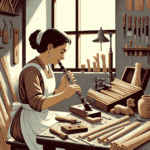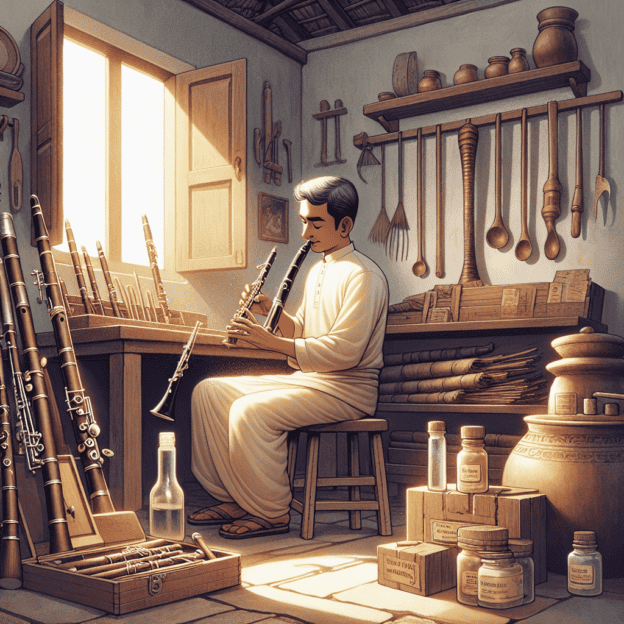When you think about the history of clarinet repair, it's like opening a chest full of stories, tips, and secret tricks that have been passed down through generations. Isn't it exciting to imagine all those craftsmen and women, hunched over instruments, diligently working to keep music alive? Exploring historical clarinet repair techniques shows us a wide array of practices that help ensure these beautiful instruments remain in top shape.
The clarinet has changed significantly since its beginnings in the early 18th century. Back then, craftsmen had limited tools and technology, yet they managed to create fantastic music from wooden tubes! Their repair skills were crucial, as the materials they used were much less durable than what we have today. Wooden clarinets, for example, would often crack, and finding methods to seal these cracks was essential.
Historical Repair Techniques
Let's examine some interesting historical repair techniques that have withstood the test of time. If you've ever tried to fix a crack in a clarinet, you know it can be challenging. Craftsmen in the past would use a sticky mixture of natural adhesives, often made from animal glues, combined with varnishes to hold their instruments together. Surprising, isn't it? They would heat these substances before applying, creating a strong bond as they cooled. This method, while simple, set the stage for more advanced modern techniques.
| Time Period | Repair Technique | Materials Used |
|---|---|---|
| 18th Century | Crack Sealing | Animal glues, varnishes |
| 19th Century | Specialized Tools | Custom shapers, knives |
| Early 20th Century | Pad and Key Refinement | Cloth, felt |
| Modern Era | Advanced Repairs | Synthetic adhesives, precision machinery |
19th Century Advancements
Moving to the 19th century, the clarinet began to gain prominence in orchestras and solo performances. With increased demand came the need for specialized repair professionals. They started to create specialized tools for everything from fine adjustments to complete overhauls. Shapers and knives were specifically designed for brass and metal work, allowing for detailed repairs that improve an instrument's sound quality.
Importance of Pads and Keys
We can't discuss clarinet repair without mentioning the importance of pads and keys. As the clarinet evolved, the choice of materials became more refined. Early pads were often made from cloth and felt, which added comfort but lacked durability. Craftsmen would carefully layer these materials for optimal performance. Today, we have synthetic options that outlast their predecessors, but the creativity of our ancestors is truly impressive!
Brand Innovation
Let's consider the role of brands during this ongoing journey of clarinet innovation. While many names come and go, brands like Martin Freres have consistently remained strong due to their quality craftsmanship. From the precision in making their clarinets to how they've adopted modern repair techniques, they demonstrate their commitment to preserving the clarinet's legacy.
Modern Tools and Techniques
Modern tools and techniques have evolved from this historical knowledge. Now we have the advantage of using synthetic adhesives and precision machinery. But understanding the foundation of those old techniques can only improve your maintenance skills and deepen your appreciation for the instrument.
Baroque Period Repairs
Let's travel back to those improvised days of the past. You might assume that repairing an instrument during the Baroque period was challenging! Surprisingly, it wasn't. Makers would often work directly with musicians to understand their playing styles, learning what adjustments could improve their instruments' performance. This grassroots approach created a direct relationship between players and makers that continues to influence practices today.
20th Century Popularity
As we enter the 20th century, the clarinet's popularity continued to grow. Jazz musicians celebrated its smooth, rich tones, which led to an increase in players, both amateur and professional. This new appreciation for the instrument created demand in the repair industry, leading to schools focused on woodwind repair techniques.
Jazz Era Repairs
Jazz clarinetists often needed repairs for issues arising from intense playing, such as stuck keys or leaks. Repair experts began developing specialized gear for musicians looking to keep their instruments ready to perform! This remains relevant today, with brands like Martin Freres being recognized not only for producing high-quality instruments but also for providing excellent support and upgrade options for repair technicians.
Repurposed Tools
Here's an interesting fact: Many of the tools used today for clarinet repair started as adapted household items. A common example is the humble pin vise – originally created for jewelers! This shows how necessity drives innovation.
Modern Repair Techniques
As modern repair technicians continue to innovate, many still incorporate the historical techniques that formed the basis for contemporary practice. With today's technology, repair has become more straightforward but requires a thorough understanding of the fundamentals. If you're interested in clarinet repair, start with basic training, then consider blending traditional methods with modern tools. This combination of skills will make you a well-rounded technician.
Conclusion
In conclusion, the story of historical clarinet repair techniques is both rich and evolving. It's a celebration of craftsmanship, music, and dedication! This journey continues, as both players and technicians discover new ways to honor the past while shaping the future. Just as the music evolves, so do the skills needed to keep those instruments singing.







